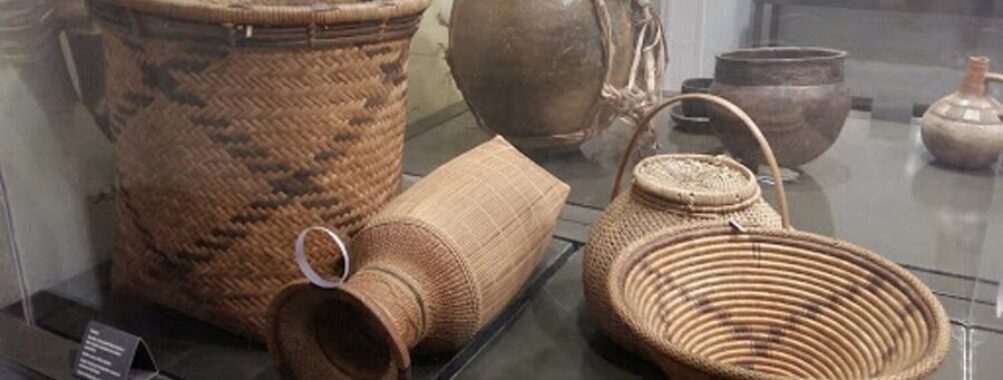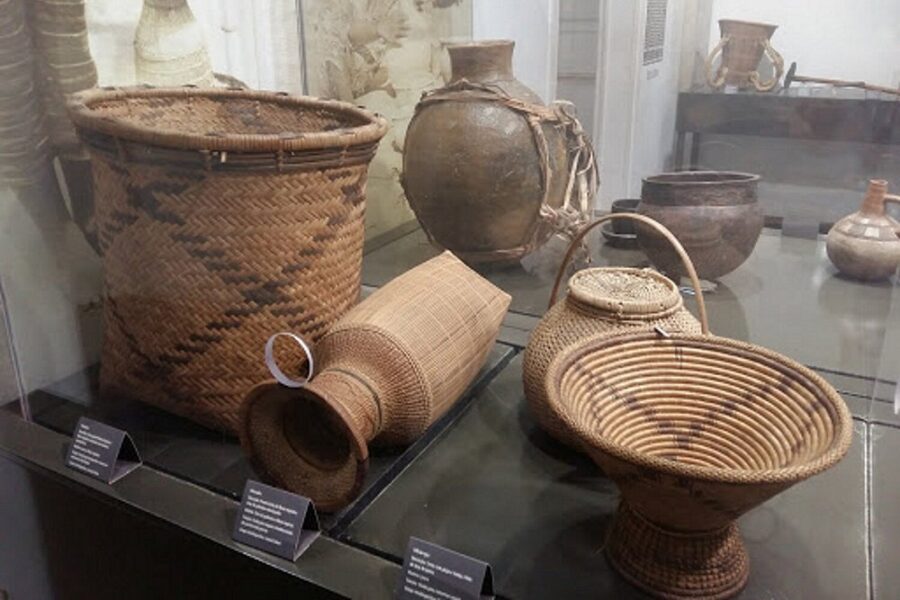
National Museum of Anthropology
Table of Contents
History and Significance

The National Museum of Anthropology, or Museu Nacional de Antropologia, isn’t just a building; it’s a symbol of Angola’s commitment to conservation. The museum was established in 1976 to showcase Angola’s rich history and culture, particularly after the country’s independence. Its main goal is to preserve the cultural heritage through different exhibition items. It started as a way to protect and display the artifacts that tell the story of the Angolan people. The significance lies in its role as a cultural touchstone, reminding us of the traditions, struggles, and triumphs of Angola. And let me tell you, seeing it all laid out, from pottery to farm implements, really drives home the depth of Angolan culture and history.
Main Attractions and Activities
Spread across two floors, the National Museum of Anthropology offers a diverse collection that captures the essence of Angolan cultural heritage. You’ll find 14 rooms filled with historical and cultural objects, from hunting and fishing tools used by the Khoisan people to intricate jewelry. The artifacts are more than just objects; they’re stories etched in time. The museum also features an impressive array of traditional musical instruments, including the marimba. As someone who enjoys unique cultural demonstrations, I was especially captivated by the iron foundry exhibit and displays of rituals of the Bantu people, including women’s rights memorabilia. Oh, and don’t miss the mask collection, a powerful reminder of the symbols and traditions ingrained in Angolan society. In short, it’s a fascinating and enriching attraction.
Visitor Experience
When you visit the National Museum of Anthropology in Luanda, prepare for an immersive experience that transcends the typical museum visit. The museum isn’t just about looking at objects; it’s about feeling the soul of Angola. From the moment you step through the doors, you’re greeted by a rich tapestry of Angolan cultural heritage. The layout of the 14 rooms guides you through the ages, showcasing everything from ancient tools used by the Khoisan people for hunting and fishing to exquisitely crafted jewelry. This institution offers a glimpse into the heart of Angola and will deepen your understanding of Angolan culture and history!
I recall one visit where I spent hours simply observing the intricate details of the pottery and trying to imagine the hands that shaped them. The exhibit design is thoughtful, allowing you to engage with each artifact on a personal level. And the staff? Incredibly knowledgeable and passionate. Don’t hesitate to ask questions; they’re eager to share their insights. The significance of the museum extends beyond its collection as it actively engages in conservation and restoration efforts, ensuring that future generations can appreciate this invaluable cultural heritage. So, if you’re looking for an enriching and thought-provoking experience, this attraction should be at the top of your list.
Tips for Visitors
Planning your visit to the Museu Nacional de Antropologia? Here are some insider tips. First, allocate at least half a day to fully appreciate the two floors of exhibition space. There’s so much to see, including:
- Traditional musical instruments like the marimba.
- Detailed displays of rituals of the Bantu people.
And I feel compelled to say: arrive early, particularly if you’re visiting during peak season, to avoid the crowds and fully immerse yourself in the cultural experience. Comfortable shoes are a must – you’ll be doing a lot of walking. And don’t forget your camera to capture the beauty and intricacy of the Angolan cultural heritage.
When exploring the museum, take your time to read the informational panels accompanying each exhibit. They provide valuable context and deepen your understanding of the artifacts. Pay close attention to the mask collection, as each mask represents a unique aspect of Angolan cultural identity. To make the most of your visit, consider the following:
- Keep an eye out for demonstrations and guided tours – they offer an even richer and more interactive experience.
- While photography is generally allowed, be respectful and avoid using flash, which can damage the delicate artifacts.
The museum also offers a small gift shop where you can purchase souvenirs and support conservation efforts. By following these tips, you can ensure a memorable and enriching visit to this important institution, located in the city of Luanda. And most importantly: remember that this is not just a museum, it’s a window into the soul of Angola and the Angolan people.
Accessibility and Facilities
The National Museum of Anthropology in Luanda strives to be accessible to all visitors. The institution provides facilities to ensure a comfortable and inclusive experience for everyone. While specific details may vary, most areas of the museum are wheelchair accessible. Ramps and elevators are available to navigate the two floors of exhibition space. Restrooms are equipped with accessibility features, and staff members are trained to assist visitors with disabilities. If you have specific needs or concerns, it’s always a good idea to contact the museum in advance to confirm the availability of specific accommodations.
In addition to accessibility features, the museum offers a range of facilities to enhance your visit. You’ll find comfortable seating areas throughout the museum, allowing you to rest and reflect on the artifacts you’ve seen. A small café or refreshment area may be available, providing a place to grab a snack or drink. The museum typically has a cloakroom where you can store your belongings, allowing you to explore the collection without being weighed down. Free Wi-Fi is often available, enabling you to share your experience on social media or access additional information about the exhibits. The conservation and care put into the exhibition and the artifact displays are excellent. And honestly, seeing the Angolan cultural heritage being so carefully preserved is extremely satisfying. By providing these facilities, the National Museum of Anthropology aims to ensure that every visitor has a positive and enriching experience exploring Angolan culture and history.
Unique Features
What sets the National Museum of Anthropology in Luanda, Angola, apart from other cultural institutions? It’s more than just a display of artifacts; it’s an immersive journey into the very soul of Angola. This museum doesn’t just showcase objects; it tells stories of the Angolan people, from their ancient traditions to their modern struggles. The museum emphasizes its commitment to conservation. The collection of traditional musical instruments, including the marimba, is really stunning. I will also mention the iron foundry exhibit and the displays of rituals of the Bantu people, including women’s rights memorabilia. This institution is a testament to the Angolans’ dedication to preserving their past and sharing it with the world. And the significance lies in the way it connects visitors to the Angolan culture and history. It stands as a symbol of national identity. If you ask me, that’s pretty unique.
Overall Impressions
My overall impression of the National Museum of Anthropology, or Museu Nacional de Antropologia, is one of profound respect and admiration. The museum isn’t just a collection of artifacts; it’s a living testament to Angola’s rich cultural heritage and the Angolan people. From the moment you walk through the doors, you’re immersed in a world of history and culture, guided through the 14 rooms by thoughtfully curated exhibits on the two floors. The museum manages to preserve and showcase the historical and cultural objects, from the hunting and fishing tools of the Khoisan people to the intricate jewelry of later civilizations. Seeing traditional musical instruments like the marimba, or learning about the rituals of the Bantu people, gives you an amazing glimpse into the soul of Angola. So, if you’re looking for an attraction that’s both educational and emotionally resonant, this institution is an absolute must-visit in Luanda, offering a really fascinating and insightful journey through Angolan culture and history.
Pros and Cons
Like any institution, the National Museum of Anthropology in Luanda has its strengths and weaknesses. There are many positive aspects to consider:
- The museum’s extensive collection offers a comprehensive overview of Angolan cultural heritage, with generally well-curated exhibits providing valuable insights into the lives and traditions of the Angolan people.
- Its conservation efforts are commendable, preserving these artifacts for future generations, solidifying the museum’s significance as a cultural touchstone. Seeing the hunting and fishing tools of the Khoisan people or the musical instruments like the marimba, I felt so connected to the soul of Angola!
However, on the con side: some visitors might find the museum a bit dated in its presentation, and I found that additional interactive displays would enhance the visitor experience. Some of the artifacts could use better lighting, and the museum shop could offer a wider range of Angolan crafts.
Location
Places to Stay Near National Museum of Anthropology
Find and Book a Tour
Explore More Travel Guides
No reviews found! Be the first to review!